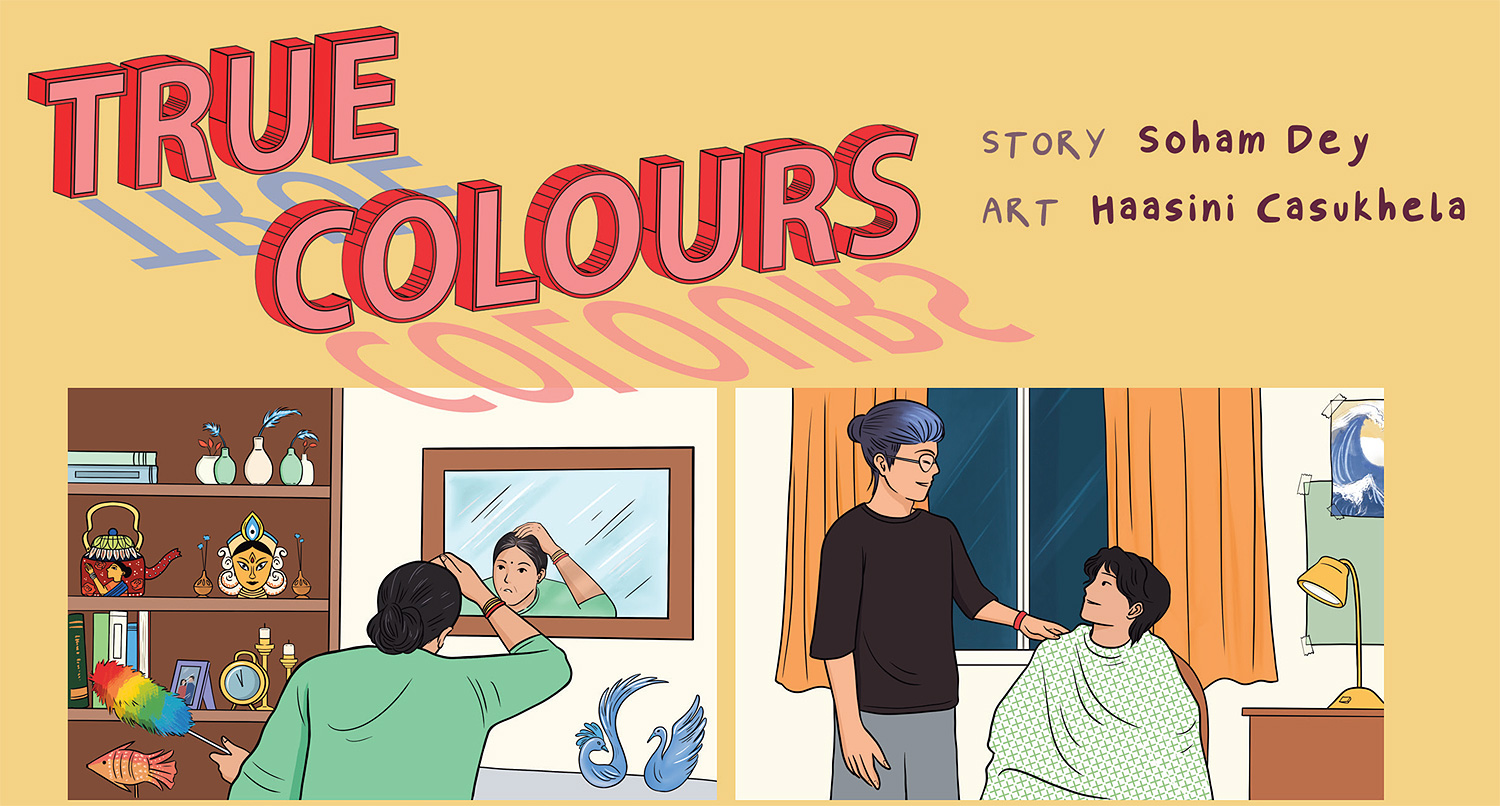
Vol 3 No 4 | Jan-Mar 2024
True Colours
Story by Soham Dey | Art by Haasini Casukhela
A brief history of dye
Although hair colouring, especially bright hair colour, may seem like a modern trend popular amongst young people, the tradition of artificially colouring hair stretches back to ancient times. The practice was prevalent in ancient Egypt, where hair was often shaved off, braided, coloured and worn as fashion wigs to shield heads from the hot sun. Black was the most popular colour, but plant materials were also used to produce red, blue, or green, while gold powder was used to create yellow.
Ancient Romans also used hair dye. Permanent black would be obtained from lead. Blonde hair was achieved by soaking hair in a solution made from the ashes of burnt plants and nuts. In Germany, hair was coloured red by applying a mixture of beech wood ash with goats’ fat. In the 15th and 16th centuries, women in Europe used ‘Oyle of Vitriol’ (or sulphuric acid) as a household dyeing agent.
Synthetic hair dyes were invented when English chemist William Henry Perkin accidentally created a mauve dye while researching a cure for malaria. Soon after, August Hofmann derived the molecule responsible for the dye para-phenylenediamine, or PPD, which remains the base for many synthetic dyes used today.
Modern-day synthetic hair colouring came into being with Eugène Schueller, the founder of L’Oréal, in 1907. Today, hair colouring is a billion dollar industry.

An early 20th century packing of L’Oreal dye
Henna in our hair
Of the ancient hair dyes, henna (mehendi in Hindi) has persisted till today. Believed to have its roots in ancient Egypt, henna has historically held a lot of cultural influence in South Asia and the Middle East where it is used to dye hair, skin, and nails.
Many Hindu marriage traditions involve dyeing women’s skin with henna. In Islam, men often dye their hair and beards red following sunnah tradition. As a hair dye, henna is used to dye the hair black or red. It is also believed to have nutritional properties for the hair and acts as a cooling agent as well.
Rainbow hair
Today, brightly coloured hair has become a fashion trend, especially in the West, with countless celebrities, artists and influencers sporting bright colours. The trend has its roots in the punk movement of the 1970s, with brightly coloured and unnatural looking hair being an expression of counterculture. Post the ‘90s, the trend went mainstream.
In India, brightly coloured hair has started to become popular among urban school and college students. Several Indian influencers can also be seen sporting bright hair colours. Although older generations used black or brown coloured hair as a way of fitting in, for many young Indians today, brightly coloured hair is a mode of expression, a way of standing out from the crowd and affirming one’s self identity.

Popular singer Billie Eilish, known for her brightly coloured locks

